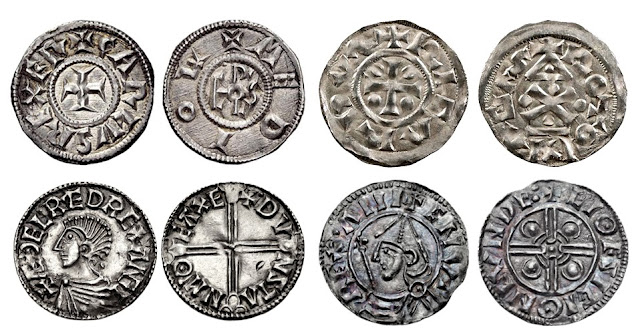Yes, we offer appraisals for medieval coins to help determine their value. Our experts can assess the authenticity, condition, and market value of your coins based on current demand and historical significance.

Medieval European Coins
Medieval European Coins are easily divided into three major categories. First, the post-antique period, moving away from the Roman tradition, based on coins of gold, silver and bronze; then the Carolingian revolution, based on silver as the monetary metal of preference, and finally the later medieval period which, led to the revival of an abundant tri-metallic coinage system, of unparalleled complexity since weight and alloys standards could change from one location to another.
Shop for Medieval European Coins in San Diego
Visit San Diego Coin & Bullion to explore our collection of Medieval European coins. Whether you’re a collector or new to the world of medieval coinage, our staff is here to assist you. Bring in your own coins for a free valuation and discover their historical and monetary value. We actively buy and sell medieval coins, ensuring a diverse and constantly updated inventory. If you have any questions about your collection or are looking for specific pieces, our experts are ready to provide personalized guidance and insights. Come and experience the rich history and craftsmanship of Medieval European coins at San Diego Coin & Bullion.

Why Collect Medieval European Coins?
There’s something magical about medieval European coins. They’re not like the boring, cookie-cutter money we use today. These beauties come in all sorts of shapes, sizes, and metals. Holding one feels like you’ve got a little piece of the past right in your hand, back when making coins was as much about creativity as it was about cold, hard cash. Every single one has a tale to spill, whether it’s about a king showing off his power, a region flush with riches, or some wild economic rollercoaster.
Over at San Diego Coin & Bullion, we get a kick out of the deep history medieval European coins bring to the table. Sure, they might not be the first pick for your average American collector. Many prefer the U.S. classics or the polished look of later European stuff. But for those who dig into the nitty-gritty, they’re a goldmine of medieval history. Whether you’re swooning over the silver deniers from the Carolingian days or drooling at the gold florins that powered Renaissance deal-making, our collection is always shifting and packed with goodies for collectors of all stripes.
Frequently Asked Questions about Medieval European Coins
Medieval coins were crafted through a multi-step process known as minting. Skilled artisans engraved designs onto metal dies, usually iron. Planchets, circular metal pieces, were then cut, annealed (heated and cooled), and placed between the dies. A mint worker struck the upper die with a hammer or press, transferring the design onto the planchet. The resulting coins were often trimmed, filed, or polished for a refined appearance. Quality control tests ensured weight and purity standards were met. Coins were then distributed for use as currency. Minting methods varied across regions and times, but this process formed the basis for creating medieval coins.
The denier, a small silver coin, stands as one of the most common medieval European coins. Minted across medieval Europe from the 8th to 13th centuries, it featured diverse designs including crosses and rulers’ portraits. The denier’s ubiquity in circulation and its extended period of minting contribute to its status as a widely recognized and frequently encountered medieval coin.
To know if you have Medieval European coins, examine their inscriptions, which often include the ruler’s name or title, and the coin’s design, which may feature monarchs, religious symbols, or castles. Pay attention to the metal used (often silver or copper) and the coin’s shape and size, as these can vary by region and era. You can also bring them into our San Diego Coin shop for one of our dealers to identify.

